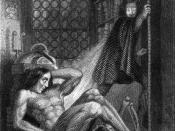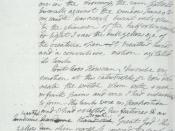Frankenstein and the Gothic Genre Mary Shelley?s Frankenstein ( 1818 ) is considered by many literary critics to be the quintessential gothic novel despite the fact that most of the more ?clichéd? conventions of the genre are either absent or employed sparingly. As many of the literary techniques and themes of Mary Shelley?s Frankenstein adhere to the conventions of the gothic genre it can be considered, primarily, a gothic novel with important links to the Romantic movement.
The period of the gothic novel, in which the key gothic texts were produced, is commonly considered to be roughly between 1760 and 1820. A period that extended from what is accepted as the first gothic novel, Horace Walpole?s The Castle of Otranto ( 1764 ), to Charles Maturin?s Melmoth the Wanderer ( 1820 ) and included the first edition of Mary Shelley?s Frankenstein in 1818. In general, the gothic novel ?..has
been associated with a rebellion against constraining neoclassical aesthetic ideals of order and unity, in order to recover a suppressed primitive and barbaric imaginative freedom? ( Kilgour, 1995, p3 ). It is also often considered to be a premature ( and thus somewhat crude ) manifestation of the emerging values of Romanticism. Although the gothic genre is somewhat shadowy and difficult to define it can be seen as having a number of characteristics or conventions which can be observed in Frankenstein including stereotypical settings, characters and plots, an interest in the sublime, the production of excessive emotion in the reader ( particularly that of terror and horror), an emphasis on suspense, the notion of the ?double? and the presence of the supernatural. (Kilgour, 1995; Botting, 1996 ; Byron, 1998 : p71 ) Gothic settings are typically archaic, harking back to a barbaric past that was considered to be...


